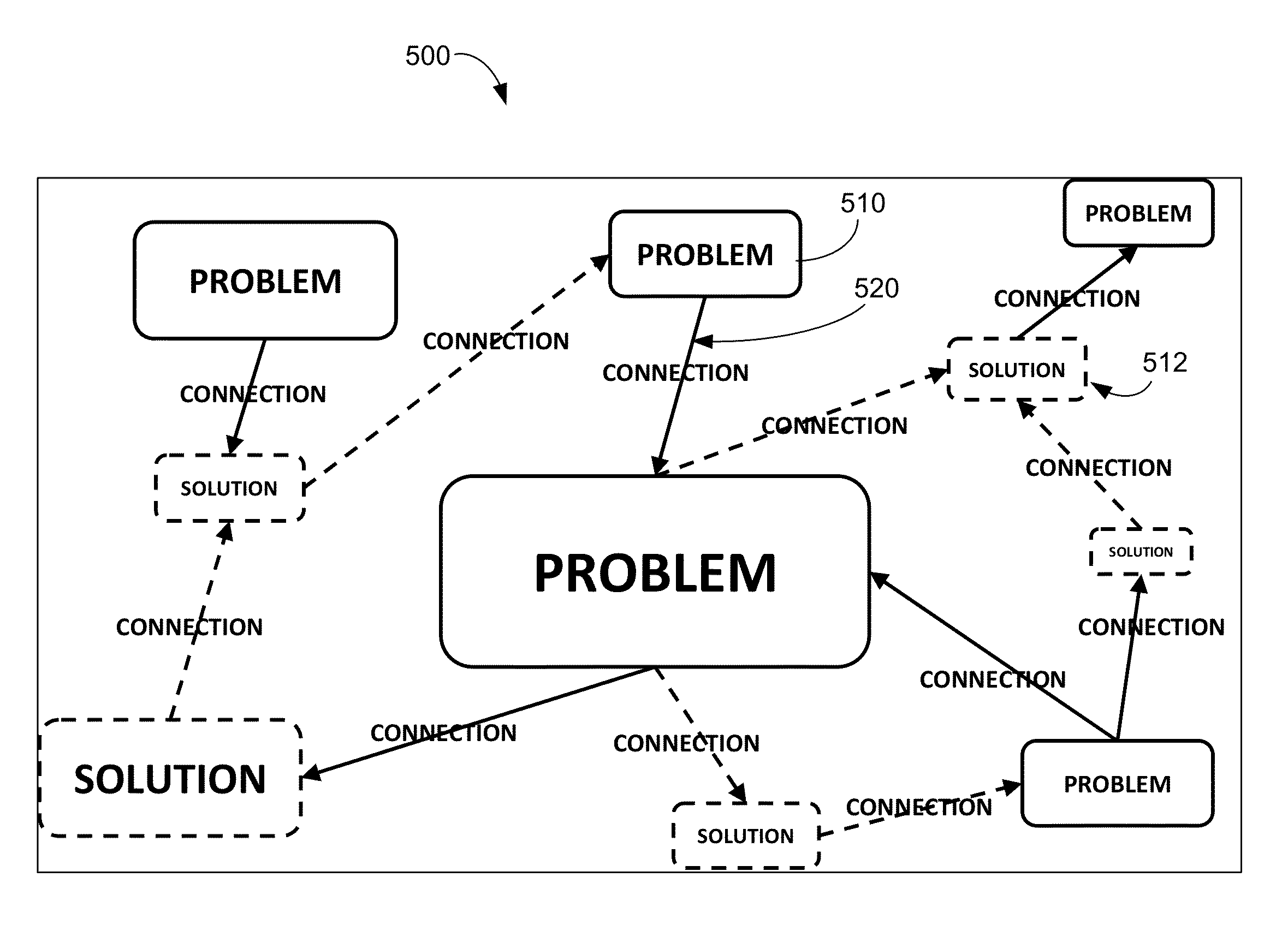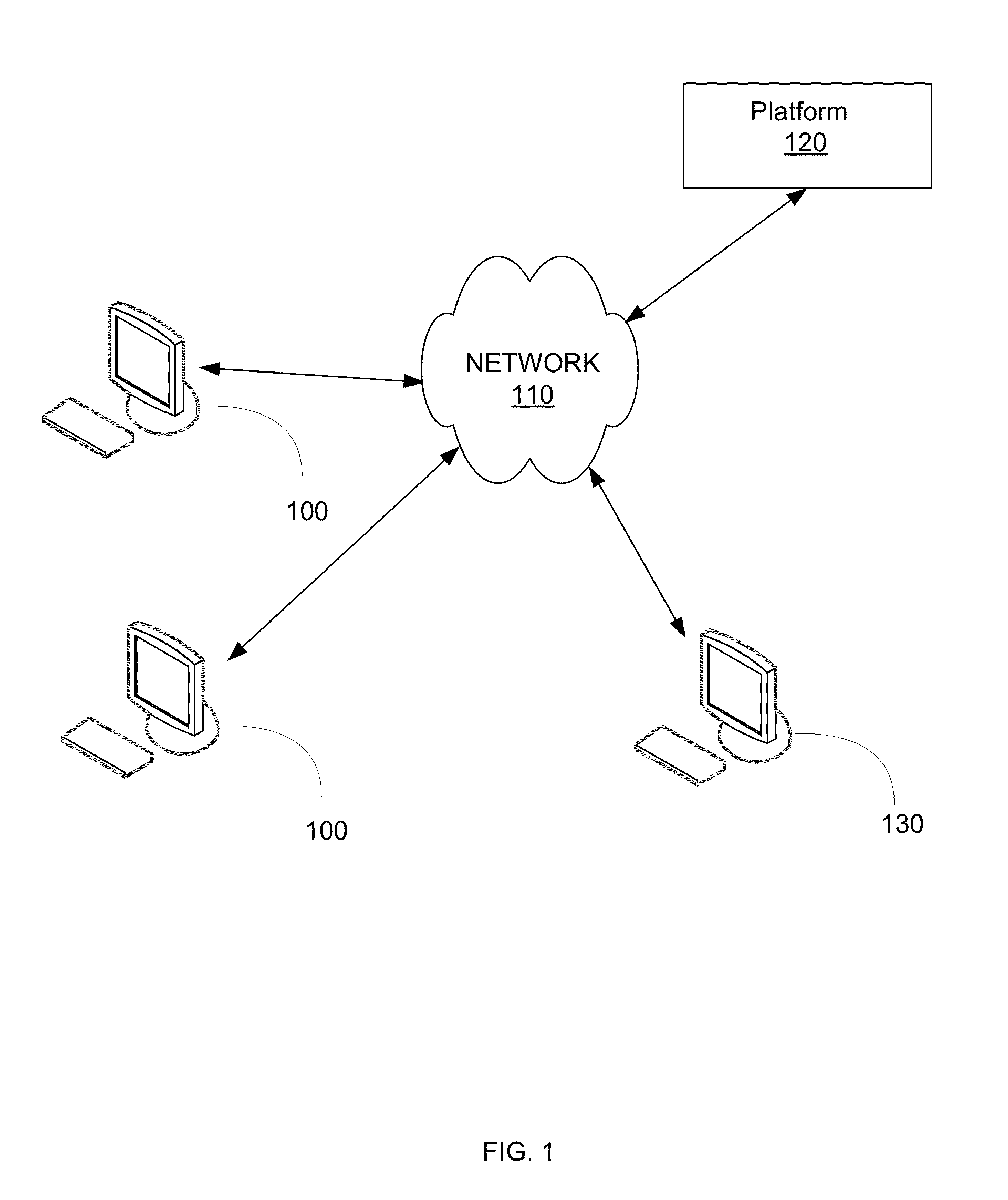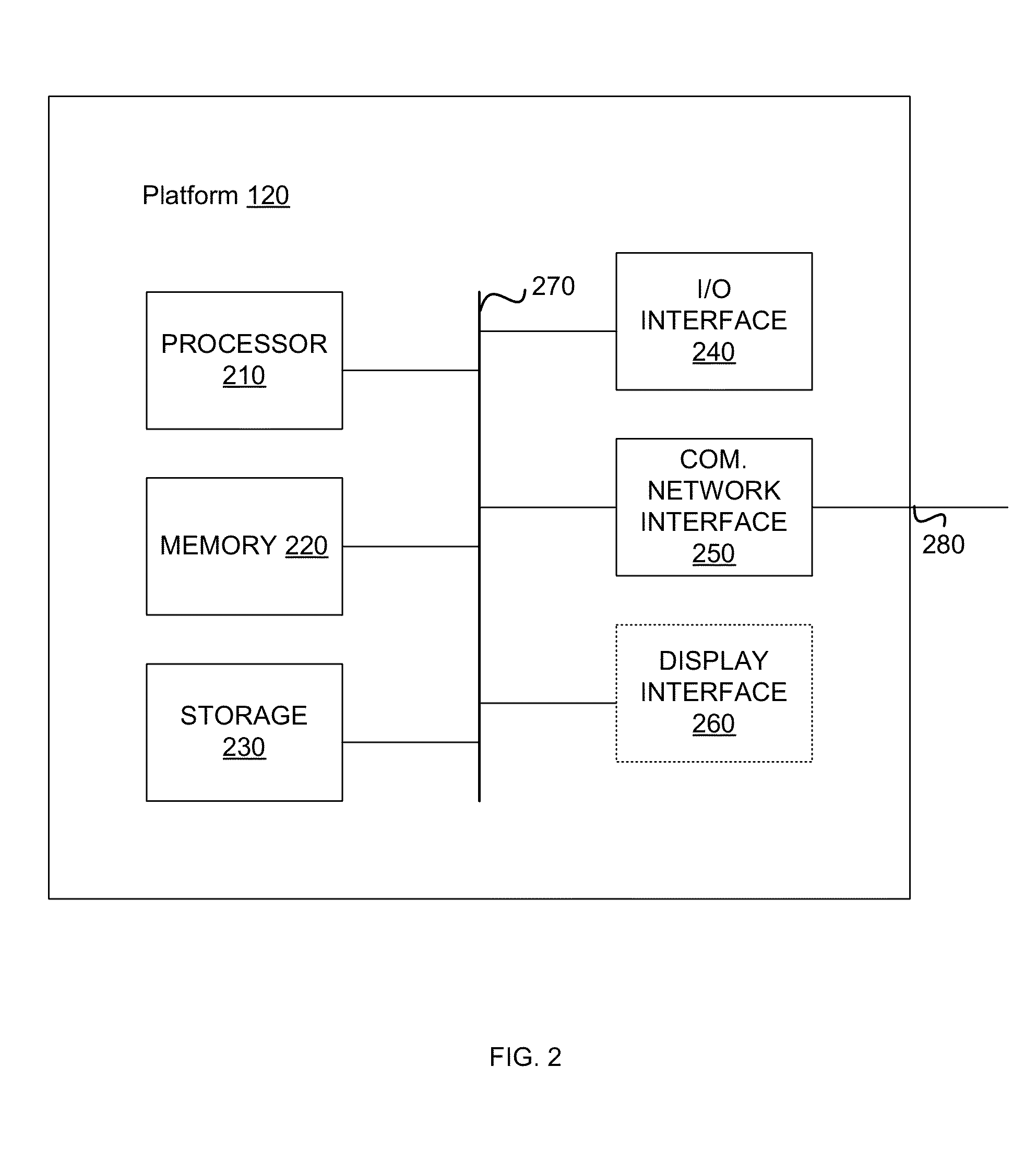Allocation of crowdsourced resources
a crowd-sourced resource and information technology, applied in the field of aggregating and displaying information, can solve the problems of difficult to answer, complicated problems, and large dialog, and achieve the effect of improving the allocation of each user's effor
- Summary
- Abstract
- Description
- Claims
- Application Information
AI Technical Summary
Benefits of technology
Problems solved by technology
Method used
Image
Examples
Embodiment Construction
[0031]A computer-implemented platform may comprise hardware and software configured to allocate crowdsourced resources. Crowdsourced resources may include efforts and / or input provided by or associated with a plurality of users (a crowd), including more than 10, 100, 1,000 10,000, 100,000, or even more than 1E6 users. Typically, the users may share a common interest (e.g., a desire to solve a problem). For such large numbers of users, an automated system to receive, process, and organize user input may improve the efficiency with which user effort is utilized.
[0032]A map may represent a knowledge-space comprising a plurality of nodes. Nodes may be connected by connections. A node may include a problem and / or a solution. A connection may describe the relationship between the connected nodes. A graphical representation of map data (e.g., the layout of the map) may comprise positions, colors, sizes, and / or other graphical features (including movement and sound, shape, line width, line ...
PUM
 Login to View More
Login to View More Abstract
Description
Claims
Application Information
 Login to View More
Login to View More - R&D
- Intellectual Property
- Life Sciences
- Materials
- Tech Scout
- Unparalleled Data Quality
- Higher Quality Content
- 60% Fewer Hallucinations
Browse by: Latest US Patents, China's latest patents, Technical Efficacy Thesaurus, Application Domain, Technology Topic, Popular Technical Reports.
© 2025 PatSnap. All rights reserved.Legal|Privacy policy|Modern Slavery Act Transparency Statement|Sitemap|About US| Contact US: help@patsnap.com



